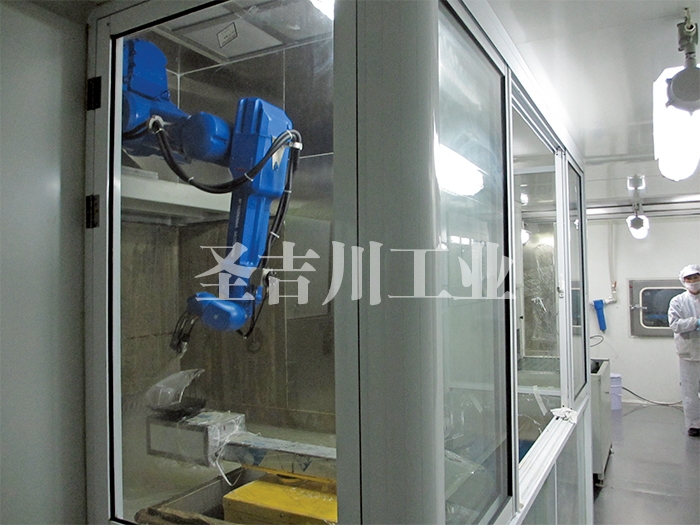

永旺彩票Thermal spraying technology in ceramic spraying line
永旺彩票1. Wear resistance-thermal spraying technology is widely used in high and low temperature. This type of coating is specifically divided into the following categories:
(1) Adhesive abrasion or scratch resistance-two surfaces slide relative to each other, and when the debris sticks from one surface to the other surface, adhesive abrasion or scratches occur. Dedicated typical coatings are cobalt-based tungsten carbide, nickel-chromium/chromium carbide coatings.
永旺彩票(2) Wear-resistant grain wear-when the harder surface slides on the softer surface, and there is wear between the two surfaces, abrasive wear occurs. When fibers and threads pass through the surface at high speed, abrasive wear also occurs. Proprietary typical coatings are cobalt-based nickel-chromium alloys, self-fluxing alloys mixed with molybdenum, and chromium oxide coatings.
(3) Resistant to fretting wear-repeated loading and unloading will produce periodic stress, which leads to surface cracking and large-area shedding. The dedicated typical coating is alumina/titanium dioxide coating.
(4) Cavitation wear resistance-liquid flow produces mechanical impact on the surface. The special typical coating is aluminum bronze coating.
永旺彩票(5) Erosion wear resistance-Erosion wear occurs when particles carried by gas or liquid impact the surface at high speed. Dedicated typical coatings are aluminum oxide/titanium dioxide and aluminum oxide coatings.
2. High temperature resistance and oxidation resistance-this kind of coating resists chemical or physical decomposition and improves the high temperature performance of parts. This type of coating is divided into the following categories:
(1) Thermal barrier coating-acting as a thermal barrier between the part and the high-temperature environment. A typical coating is a zirconia coating stabilized with yttrium oxide.
永旺彩票(2) Anti-high temperature oxidation coating-protect the substrate against high temperature oxidation. The typical coating is nickel/chromium coating.
(3) Heat-resistant corrosion coating-to protect the substrate exposed to hot corrosive gas. The typical coating is nickel/chromium coating.
3. Anti-corrosion coating-it is more complicated to choose this kind of coating, because the parts are in service, the ambient temperature and various media have certain requirements for the coating materials, generally cobalt-based alloys, nickel-based alloys and oxides are used. Ceramics are used as coating materials to block the penetration of corrosive media by improving the compactness of the coating; reasonably select the oxidation/reduction potential of the coating material and the part base material to prevent electrochemical corrosion and apply corrosive sealing agent.
4. Conductive coating or insulating coating-this type of coating is divided into the following types:
(1) Conductive coating-the special typical coating is copper coating.
(2) Insulation coating-the special typical coating is alumina coating.
(3) Shielding coating-the typical coating for anti-electromagnetic interference (EMI) or high frequency interference (RFI) is copper coating.
5. Recover size coating-this type of coating is mainly used to repair parts that are worn or processed out of tolerance. The choice of coating material mainly depends on the use requirements of the parts.
Into shengjichuan+
Product Center+
Case presentation+
News and information+